Travel history. Architectural monuments of my city. The Monument to the Scuttled Ships

Hi, Steemians…
I began a cycle of historical posts about military and architectural monuments of Sevastopol. This is the fourth post in this series, so I invite you!
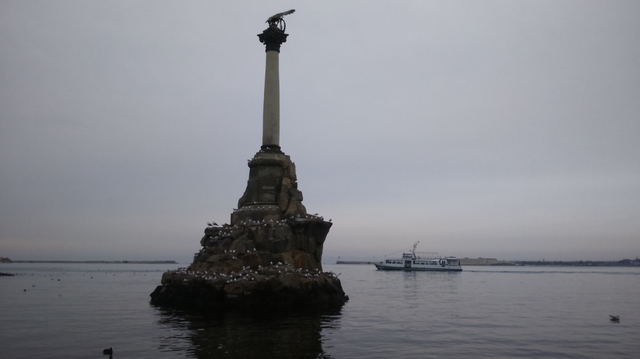
The Monument to the Scuttled Ships is the most famous monument of Sevastopol. From the late 60s of the last century, he appeared on the emblem of the city. His photos can be found on commemorative coins, postage stamps and even banknotes.
Let us turn to the tragic events of the Crimean military campaign of 1854-1855, or rather to the part of them that we are better known as the First Defense of Sevastopol.
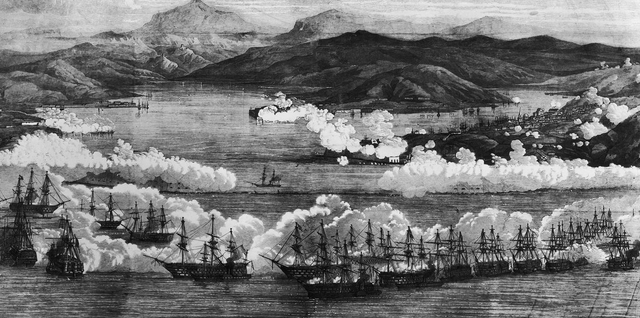
After the defeat of the Russian army at the Alma River, it became clear that the siege of the city could not be avoided. It was necessary to seek a solution on how to prevent the Allied fleet (Turkey, France and England) from breaking through to Sevastopol. The whole trouble was in the eternal Russian problem - the technological lag. The enemy fleet imagined a squadron of 21 warships, 8 of which had a steam engine. They need to add another 33 support ships.

At the same time, the Russian Black Sea fleet located in the Sevastopol Bay, there were only 14 combat sailing ships, which could not reach the position without a fair wind. Half of these ships, even by these standards, were obsolete.
At the Military Council of the Defense Command of the city, on September 9, 1854, it was decided at the entrance to the bay to flood the 6 most obsolete vessels. Thus, the enemy would not be able to land the troops inside the city. Therefore, on September 11, the ships were flooded.
Below you see a fragment of the map of the defense of the city, with an approximate place of flooding and the names of these ships.
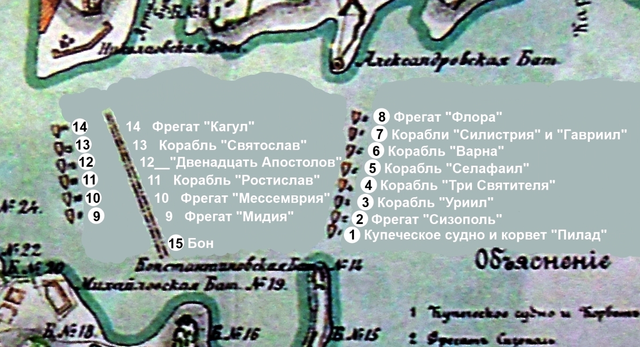
In addition, there was another problem, why it was decided to do so. Coastal artillery was not able to prevent the penetration of enemy ships in the bay. This was confirmed by an experiment that was carried out a few months before. A large merchant ship was launched into the wind at the entrance to the bay, and he safely ran aground at its end, receiving minor damage from the artillery that bombarded it with all the guns.
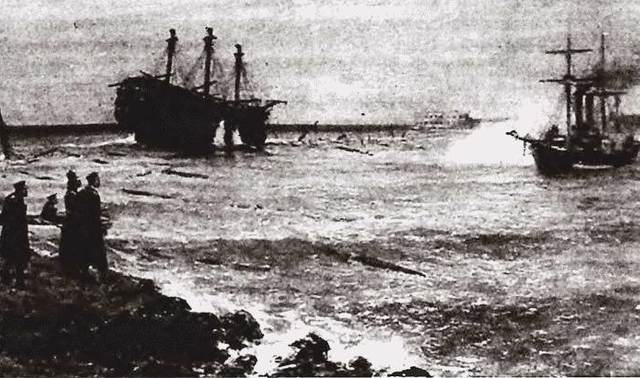
Flooding of the ships occurred as follows. The ships were anchored in a chain, after which they were shot by one of the remaining ones. Above, the famous lithography of what is happening, with which many artists later painted pictures.
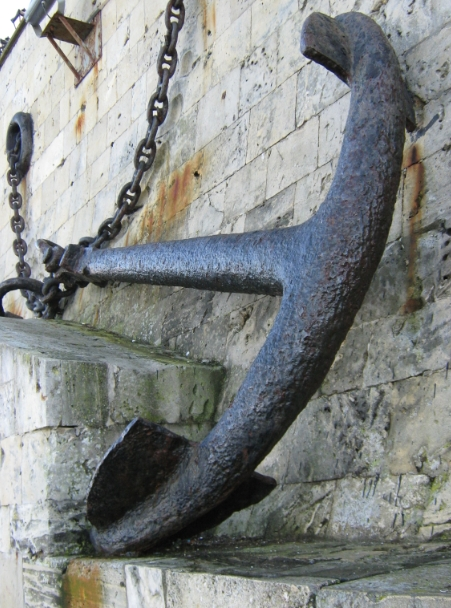
Two anchors were removed from these ships, which many years later became part of the monument, taking their place opposite it, on the embankment.
After the flooding, the ships' masts remained stuck above the water, becoming an insurmountable obstacle for the enemy fleet.
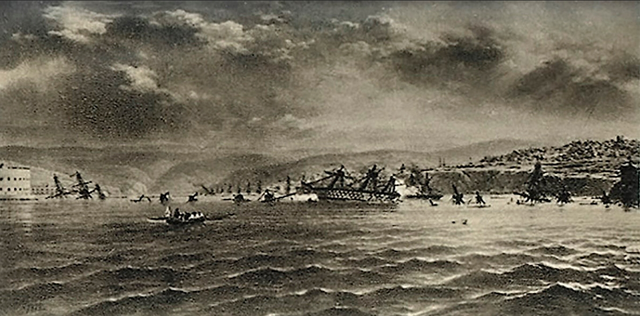
Due to the autumn storms, part of the masts broke, forming passages, then two more frigates flooded into the same row. And by February of the following year all the remaining ships were scuttled, forming a second line of defense. The plan of their placement is shown on the famous English plan of the siege of the city.
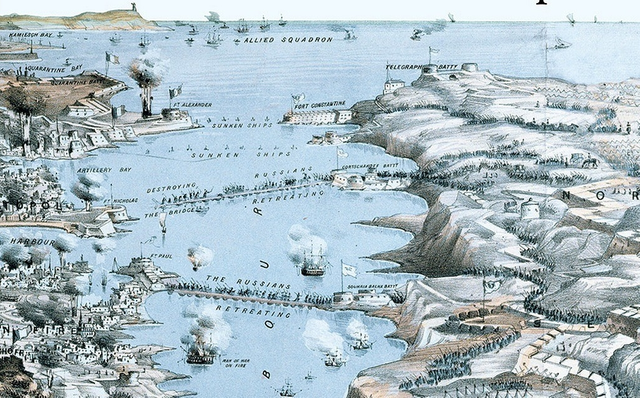
The war ended with the signing of the Treaty of Paris in 1856. And in 1905, in honor of the 50th anniversary of these memorable events, this monument was erected in Sevastopol, 20 meters from the Kornilov Embankment.
The authors of the monument were sculptor A. Adamson, architect V. Feldman. and engineer S. Enberg
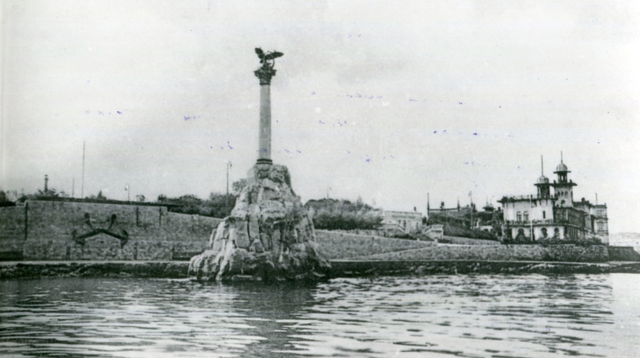
The monument itself protrudes from the water at 17 meters. But the length of the basalt column is much longer, since when installed it was deepened into the bottom by several meters. This allowed the monument to withstand the impact of storm waves, which happened here before the construction of the breakwaters.
The monument was kept during a major earthquake in 1927. In addition, it survived during the Second Defense of the city. It could not damage the explosion of a barge with ammunition a few meters away. A little later, a drifting depth bomb hit it and exploded, but in this case it also withstood.
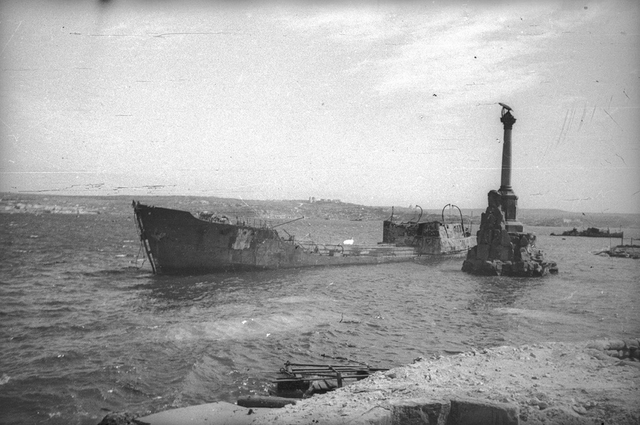
This monument is always lucky. In the twenties, during the struggle with the remnants of the royal past, it was officially renamed - the cross was brought down from it and it became a symbol of the Second International. But did not stick.
According to some information, at the same time, a crowd of people, having tied up the pommel of the monument with ropes, tried to throw off the crown from it or at least harm it in any way. Everything was in vain. The monument passed all quality tests. Previously built per century
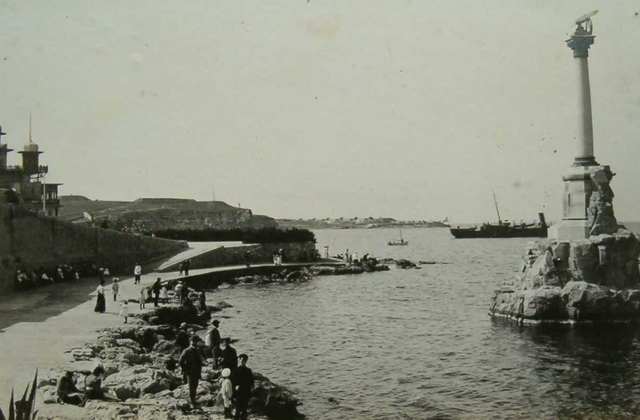
The embankment in front of the monument has always been a favorite place for walking citizens and visiting holidaymakers. So it was before the revolution, as in the top photo, and now.
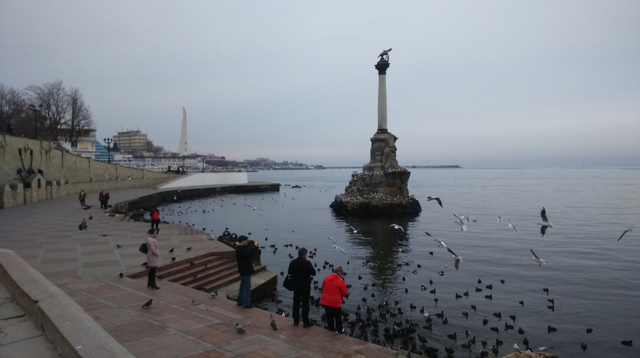
After the war, when the people were easier, the embankment turned into a city beach. Local guys jumped into the water from the foot of the column, which was not safe. History lovers roamed between tanning bodies
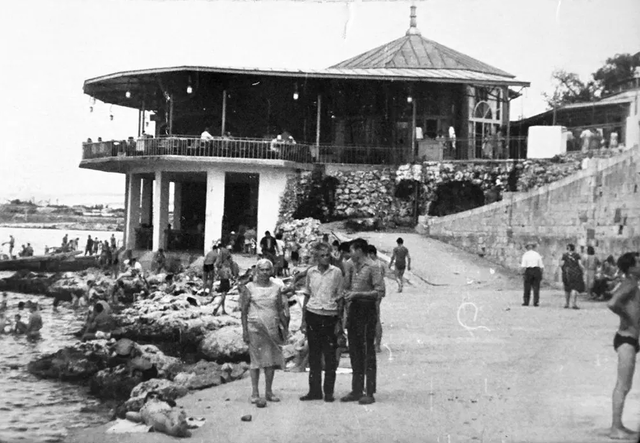
But everything flows and changes, the embankment is dressed in granite for many years. And on the contrary - a monument, which, hopefully, will stand here forever.
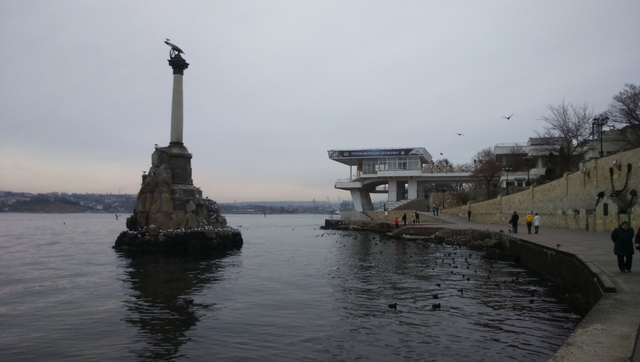
Some of the photos and images taken from the city archive and the Internet. The rest are taken with the camera "Canon A 470"
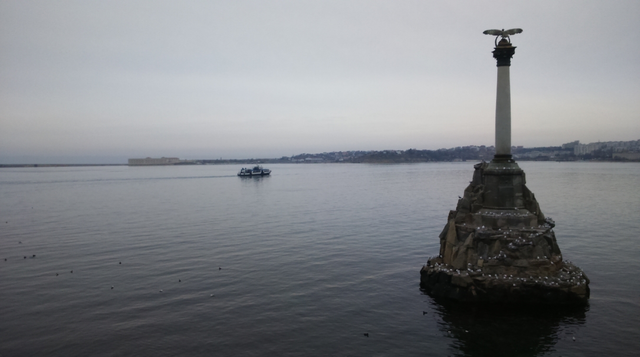
Thank you all for reading and support!
Good luck!
✅ Enjoy the vote! For more amazing content, please follow @themadcurator for a chance to receive more free votes!